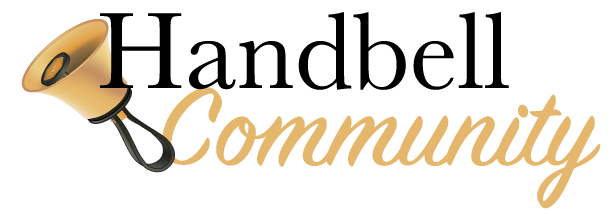 Sponsored by Jeffers Handbell Supply, Inc..
Sponsored by Jeffers Handbell Supply, Inc..Dare Team Press
© 2016
History:
When Carol Dare was faced with a diminished number of ringers in the early fall every year, she realized that she had to think outside the box to find music that was accessible to the remaining choir members. Much of the music written for solo and ensemble ringing requires that the ringers be able to read and play more than the standard ‘two-bell position’ with its related chromatics but the ringers in Carol’s choir didn’t have or weren’t interested in learning the advanced skills needed for the solo/ensemble music in print at that time.
Carol, a retired music teacher, challenged husband John, also a retired music teacher, to compose music that met the needs of her choir—pieces that were musically interesting and pleasing to listeners and could be played by small groups of ringers using only their standard two bell positions and the corresponding chromatic notes. John accepted the challenge. Creating music within those parameters ensured that the ringers didn’t need to struggle to play more bells than they were comfortable with, but instead were able to gain confidence and enjoy ringing. Around the same time, Carol saw several posts on Handbell-L from other directors looking for the same type of music. She sensed there was an unfilled need ... and Dare Team Press was born.
The first publication from Dare Team Press was a collection for five ringers, released in 2003. Carol prepared the manuscripts, a local fast print company printed the copies, and a local music store agreed to distribute the music. In 2013, Jeffers Handbell Supply, Inc. became the distributor for Dare Team Press. The Dare Team Press catalog features music for three, four, five, or six ringers, with some titles that are flexible on the number of ringers needed. The pieces are either level 1 or level 2 in difficulty; the level 1 pieces allow beginning and less experienced ringers to sound good when they perform and the level 2 pieces are very handy on those occasions when a few ringers will be absent. In Carol’s words, “Easy music played accurately and musically sounds good and provides a satisfying experience for both the ringers and the congregation.”
Prior experience as a director had proved to Carol that the overall musicality of her bell choir improved when all ringers could distinguish the melody by sight. Knowing where the melody is and whether their notes are melody or harmony is very important for any handbell ensemble. In many cases, by the time ringers actually hear the melody, it is often too late to ring their own notes appropriately. Therefore, Carol began using a green asterisk to mark the melodic notes in each ringer’s music, even if that ringer did not have any melodic notes. Since this was a laborious and time consuming task, she eventually realized that printing the melodic notes in red was an easier way to show the notes in John’s compositions. Although printing the melody in red added extra work to her task of score preparation and raised the printing price, the end result was worth it; all ringers could clearly see the melodic line. Having complete editorial control over the finished product made this concept possible to execute. Of course, it didn’t hurt that the editor and the composer are married!
There are a lot of music writing duos out there (think Rogers & Hammerstein, George & Ira Gershwin, Tim Rice & Andrew Lloyd Webber to name a few), but how many of them are a husband and wife team? The name of the company - Dare Team Press - says it all. John and Carol are a family team. Each of them has a MIDI studio consisting of a Macintosh computer using Finale and a keyboard with a MIDI port. John composes for the fun of it. As editor, Carol prepares his files for publication and makes mp3 recordings for advertising. An added bonus is the ability to do all of this creative work from the comfort of their home.
The complete Dare Team Press catalog is available for viewing and purchasing on Handbell World.